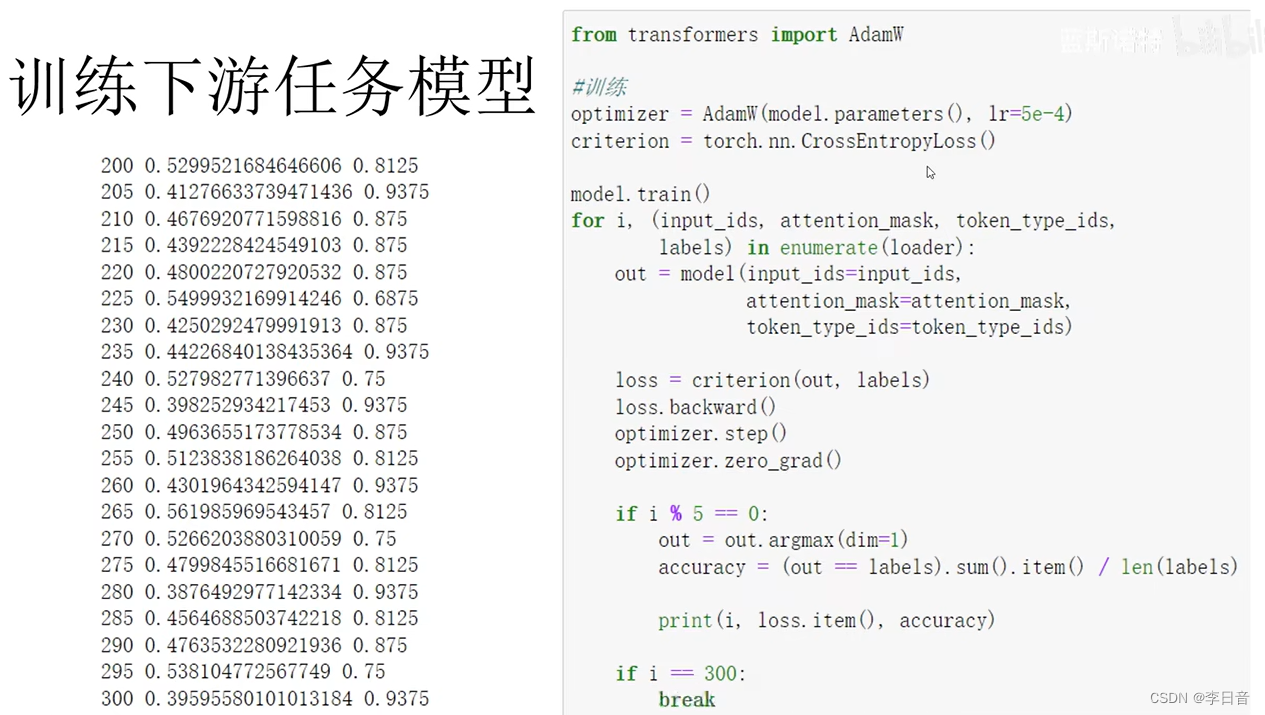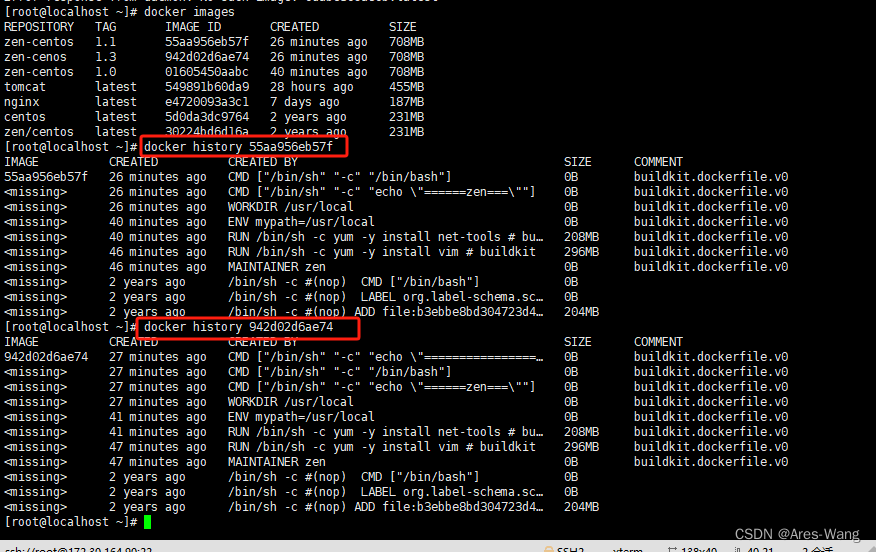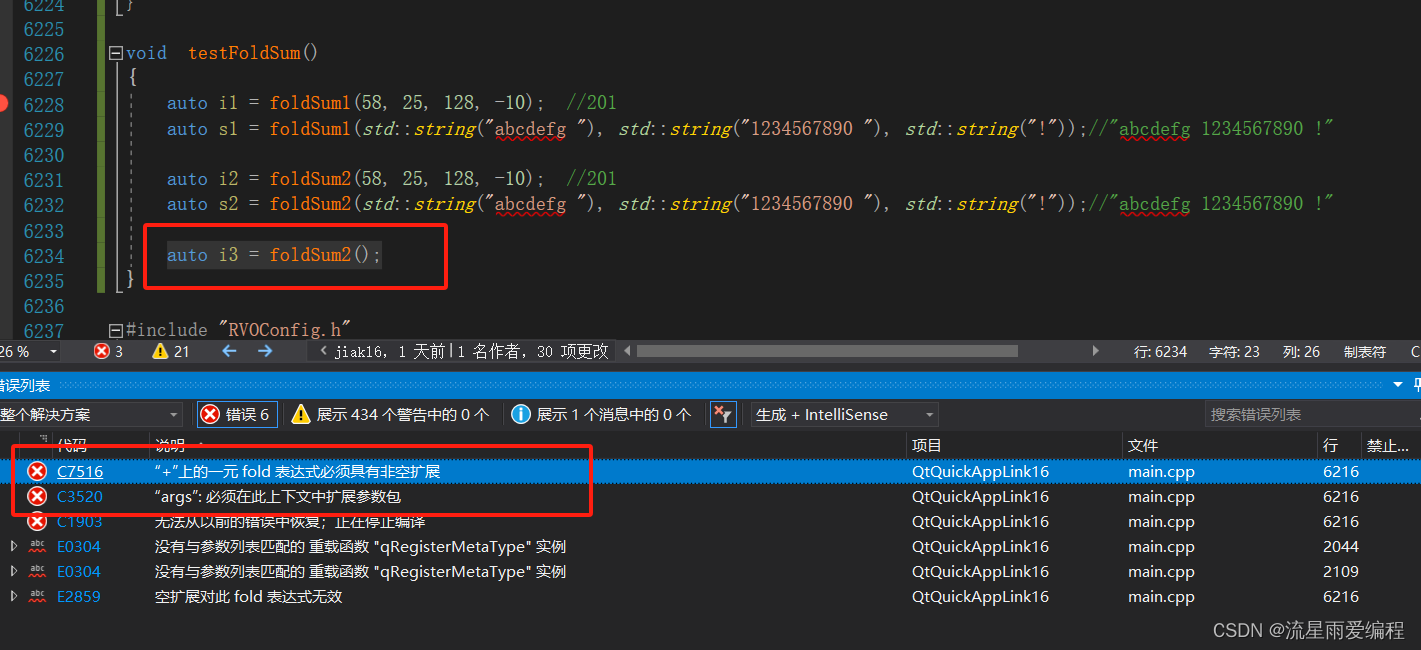排序算法 —— 堆排序
算法基础介绍
堆排序(Heap Sort)是一种基于比较的排序算法,它利用堆这种数据结构来实现排序。堆是一种特殊的完全二叉树,其中每个节点的值都必须大于或等于(最大堆)或小于或等于(最小堆)其子节点的值。
基本概念
堆是一个近似完全二叉树的数据结构,满足任一非叶子节点的值不小于(或不大于)其左右孩子节点的值。堆通常分为最大堆和最小堆:
- 最大堆:每个节点的值都大于或等于其子节点的值。
- 最小堆:每个节点的值都小于或等于其子节点的值。
堆排序算法通过构建一个最大堆或最小堆,然后将堆顶元素(最大或最小值)与堆的最后一个元素交换,再将剩余的元素重新调整为最大堆或最小堆,如此反复,直到整个数组有序。
算法步骤
- 构建堆:将无序的输入数组转换为一个最大堆或最小堆。
- 堆排序:
- 将堆顶元素(最大或最小值)与堆的最后一个元素交换,将其移出堆。
- 调整剩余元素,使其重新成为一个最大堆或最小堆。
- 重复上述步骤,直到所有元素都被移出堆。
伪代码描述
function heapsort(array)
build_max_heap(array)
for end from size(array) down to 2 do
swap array[1] with array[end]
heap_size = heap_size - 1
sift_down(array, 1)
end for
end function
堆排序是一种高效的排序算法,具有以下优缺点:
优点
- 时间复杂度稳定:堆排序的时间复杂度为(O(nlog(n))),其中n是数组的长度。这个复杂度在所有比较排序算法中是最优的,因为比较排序的最坏时间复杂度为(O(nlog(n)))。
- 空间复杂度低:堆排序是原地排序,除了常数个额外空间用于存储递归栈之外,不需要额外的内存空间。
- 不稳定的排序算法:堆排序是不稳定的排序算法,这意味着如果两个元素相等,它们的相对顺序在排序后可能会改变。
- 适用于各种数据类型:堆排序可以适用于各种数据类型,包括整数、浮点数、字符串等,只要能够为这些数据类型定义合适的比较操作。
- 易于实现:堆排序的实现相对简单,尤其是使用二叉堆的实现。
缺点
- 最坏情况性能差:虽然平均时间复杂度为(O(nlog(n))),但在最坏情况下(输入数据完全逆序),堆排序的时间复杂度退化为(O(n^2))。
- 不稳定排序:对于某些需要稳定排序的应用场景(如数据库索引),堆排序可能不是最佳选择。
- 对内存要求高:虽然空间复杂度低,但在排序过程中,堆中的元素可能会频繁地移动,这可能导致较高的内存访问开销。
- 初始化堆的时间开销:虽然堆排序的总时间复杂度是(O(nlog(n))),但这个复杂度是在整个排序过程中累积的。在实际应用中,构建初始堆的过程可能会占用一定的时间。
总体而言,堆排序是一个在实际应用中广泛使用的排序算法,特别是当内存使用是一个关键因素时。然而,对于需要稳定排序的应用,或者当数据已经部分有序时,可能需要考虑其他排序算法,如归并排序或快速排序
应用场景
堆排序在实际开发过程中的常见应用场景包括:
- 优先级队列:堆排序是优先级队列实现的基础。在许多编程语言中,优先级队列(或称为最小堆)就是基于堆排序原理实现的。这种数据结构允许快速插入和删除最小元素,常用于任务调度、事件处理等场景。
- 排序算法比较:在开发中,为了验证新算法的性能,开发者可能会将堆排序与其他排序算法(如快速排序、归并排序)进行比较。堆排序因其简单性和稳定性,常作为基准算法之一。
- 数据挖掘:在数据挖掘和机器学习领域,堆排序可用于处理大规模数据集的预处理步骤,如特征选择、频繁项集挖掘等。
- 文件系统:堆排序可用于文件系统的目录排序,帮助用户快速找到文件。
- 数据库索引:虽然数据库通常使用B树或B+树索引,但在某些特殊情况下,堆排序可以作为辅助算法来优化索引的构建过程。
- 缓存管理:在缓存管理系统中,堆排序可用于维护缓存数据的有序性,例如,根据最近最少使用(LRU)策略来淘汰缓存项。
- 算法教学:堆排序是计算机科学教育中常用的教学示例,用于讲解数据结构和算法的概念。
- 图形处理:在图形处理中,堆排序可用于顶点排序,以便于后续的图形操作,如生成凸包、计算几何形状的交点等。
- 游戏开发:在游戏开发中,堆排序可用于实现游戏对象的优先级处理,例如,根据对象的属性(如生命值、攻击力等)对对象进行排序。
- 网络协议:在网络协议处理中,堆排序可用于数据包的优先级处理,确保高优先级的数据包得到优先处理。
堆排序的优点,如时间复杂度的稳定性和低空间复杂度,使其在需要快速、高效处理大规模数据的场景中非常有用。然而,它的不稳定性也是一个需要注意的点,特别是在需要保持数据相对顺序的应用中。
时间复杂度
最佳情况
在最佳情况下,输入数组已经是有序的,堆排序只需要进行一次建堆操作,然后进行一次简单的调整即可完成排序。因此,最佳情况下的时间复杂度是 (O(n))。
最坏情况
在最坏情况下,输入数组是完全逆序的,需要进行 n-1 次建堆操作,并且每次调整堆都需要将堆中的元素重新排列。因此,最坏情况下的时间复杂度是 (O(n^2))。
平均情况
在平均情况下,堆排序的时间复杂度是 (O(nlog(n)))。这是因为虽然最坏情况下的时间复杂度是 (O(n^2)),但在大多数实际应用中,数据并不是完全逆序的,因此平均时间复杂度更接近于 (O(nlog(n)))。
空间复杂度
堆排序是一个原地排序算法,除了用于存储递归栈的常数空间之外,不需要额外的内存空间。因此,空间复杂度是 (O(1))。
证明
时间复杂度证明
- 建堆操作:建堆操作的时间复杂度是 (O(n))。
- 调整堆:调整堆的时间复杂度是 (O(n))。
- 排序过程:排序过程需要进行 n-1 次调整堆的操作。
综合以上,堆排序的总时间复杂度是 (O(n + (n-1) * O(n)) = O(n^2))。
空间复杂度证明
堆排序是一个原地排序算法,除了用于存储递归栈的常数空间之外,不需要额外的内存空间。因此,空间复杂度是 (O(1))。
综上所述,堆排序的时间复杂度在最佳情况下为 (O(n)),最坏情况下为 (O(n^2)),平均情况下为 (O(nlog(n))),空间复杂度为 (O(1))。
代码实现
Python 实现
def heapify(arr, n, i):
largest = i
left = 2 * i + 1
right = 2 * i + 2
if left < n and arr[i] < arr[left]:
largest = left
if right < n and arr[largest] < arr[right]:
largest = right
if largest != i:
arr[i], arr[largest] = arr[largest], arr[i]
heapify(arr, n, largest)
def heapsort(arr):
n = len(arr)
for i in range(n//2 - 1, -1, -1):
heapify(arr, n, i)
for i in range(n-1, 0, -1):
arr[i], arr[0] = arr[0], arr[i]
heapify(arr, i, 0)
C++ 模板实现
Java 实现
扩展阅读
堆排序的时间复杂度优化主要集中在减少建堆和调整堆的次数上。以下是一些常见的优化方法:
时间复杂度的优化方法
- 减少比较次数:通过减少不必要的比较,可以减少建堆和调整堆的时间。例如,可以使用二叉堆的路径压缩技术,在调整堆的过程中减少子节点与父节点的比较次数。
- 使用斐波那契堆:斐波那契堆是一种数据结构,它可以在O(log n)的时间内完成堆的插入、删除和合并操作。这比二叉堆的O(log n)复杂度更优。
- 延迟删除:在某些实现中,为了避免频繁地调整堆,可以延迟删除操作,直到需要的时候才进行。
- 减少调整堆的次数:通过选择合适的堆大小和调整策略,可以减少调整堆的次数。
历史上常用的堆排序的变种算法
- 斐波那契堆:斐波那契堆是一种改进的堆数据结构,它可以在O(log n)的时间内完成堆的插入、删除和合并操作,比二叉堆更优。
- 二叉堆:二叉堆是最常见的堆实现,它包括最大堆和最小堆。二叉堆的调整操作通常需要O(log n)的时间复杂度。
- 左倾堆:左倾堆是一种特殊的堆实现,它通过减少堆的平衡调整次数来优化性能。
- 二项堆:二项堆是一种特殊的堆实现,它使用二项树的性质来优化堆的插入和删除操作。
- 二叉索引堆:二叉索引堆是一种结合了二叉堆和二叉树索引的数据结构,它可以在O(log n)的时间内完成堆的插入、删除和合并操作。
这些变种算法的目的是通过优化堆的实现细节,减少堆排序的时间复杂度,使其在实际应用中更加高效。在选择堆排序的变种算法时,需要考虑数据的特点和应用场景,以确定最适合的算法。
斐波那契堆排序
斐波那契堆排序(Fibonacci Heap Sort)是一种堆排序的变种,由Michael L. Fredman, Robert Sedgewick, Daniel D. Sleator, 和Robert E. Tarjan在1986年提出。斐波那契堆是一种数据结构,它提供了一种堆操作的实现,这些操作包括插入、删除最小元素、删除最小元素的父节点等,其时间复杂度几乎都是O(log n)。
基本概念
斐波那契堆是一种堆数据结构,它支持以下操作:
- 插入:将一个元素添加到堆中。
- 删除最小元素:移除堆中的最小元素。
- 删除最小元素的父节点:移除并返回堆中与最小元素具有相同父节点的最小元素。
- 合并:将两个斐波那契堆合并成一个堆。
斐波那契堆通过减少堆的平衡调整次数来优化性能。在斐波那契堆中,插入和删除操作通常需要O(log n)的时间复杂度,而传统的二叉堆通常需要O(log n)的复杂度。
算法步骤
斐波那契堆排序的基本步骤如下:
- 初始化:创建一个空的斐波那契堆。
- 插入元素:将所有待排序的元素插入到斐波那契堆中。
- 删除最小元素:重复执行以下操作,直到堆中只剩下一个元素:
- 删除并返回堆中的最小元素。
- 将删除元素的后继节点(如果有)插入到堆中。
- 排序完成:最后剩下的元素是排序后的第一个元素。
伪代码描述
斐波那契堆排序(A)
创建一个空的斐波那契堆
对于每个元素x in A
插入(斐波那契堆, x)
while 斐波那契堆中元素数量 > 1
删除并返回最小元素(斐波那契堆)
将删除元素的后继节点插入(斐波那契堆)
返回堆中剩下的元素
Python 代码实现
class FibonacciHeap:
# internal node class
class Node:
def __init__(self, key, value):
self.key = key
self.value = value
self.parent = self.child = self.left = self.right = None
self.degree = 0
self.mark = False
# function to iterate through a doubly linked list
def iterate(self, head):
node = stop = head
flag = False
while True:
if node == stop and flag is True:
break
elif node == stop:
flag = True
yield node
node = node.right
# pointer to the head and minimum node in the root list
root_list, min_node = None, None
# maintain total node count in full fibonacci heap
total_nodes = 0
# return min node in O(1) time
def find_min(self):
return self.min_node
# extract (delete) the min node from the heap in O(log n) time
# amortized cost analysis can be found here (http://bit.ly/1ow1Clm)
def extract_min(self):
z = self.min_node
if z is not None:
if z.child is not None:
# attach child nodes to root list
children = [x for x in self.iterate(z.child)]
for i in range(0, len(children)):
self.merge_with_root_list(children[i])
children[i].parent = None
self.remove_from_root_list(z)
# set new min node in heap
if z == z.right:
self.min_node = self.root_list = None
else:
self.min_node = z.right
self.consolidate()
self.total_nodes -= 1
return z
# insert new node into the unordered root list in O(1) time
# returns the node so that it can be used for decrease_key later
def insert(self, key, value=None):
n = self.Node(key, value)
n.left = n.right = n
self.merge_with_root_list(n)
if self.min_node is None or n.key < self.min_node.key:
self.min_node = n
self.total_nodes += 1
return n
# modify the key of some node in the heap in O(1) time
def decrease_key(self, x, k):
if k > x.key:
return None
x.key = k
y = x.parent
if y is not None and x.key < y.key:
self.cut(x, y)
self.cascading_cut(y)
if x.key < self.min_node.key:
self.min_node = x
# merge two fibonacci heaps in O(1) time by concatenating the root lists
# the root of the new root list becomes equal to the first list and the second
# list is simply appended to the end (then the proper min node is determined)
def merge(self, h2):
H = FibonacciHeap()
H.root_list, H.min_node = self.root_list, self.min_node
# fix pointers when merging the two heaps
last = h2.root_list.left
h2.root_list.left = H.root_list.left
H.root_list.left.right = h2.root_list
H.root_list.left = last
H.root_list.left.right = H.root_list
# update min node if needed
if h2.min_node.key < H.min_node.key:
H.min_node = h2.min_node
# update total nodes
H.total_nodes = self.total_nodes + h2.total_nodes
return H
# if a child node becomes smaller than its parent node we
# cut this child node off and bring it up to the root list
def cut(self, x, y):
self.remove_from_child_list(y, x)
y.degree -= 1
self.merge_with_root_list(x)
x.parent = None
x.mark = False
# cascading cut of parent node to obtain good time bounds
def cascading_cut(self, y):
z = y.parent
if z is not None:
if y.mark is False:
y.mark = True
else:
self.cut(y, z)
self.cascading_cut(z)
# combine root nodes of equal degree to consolidate the heap
# by creating a list of unordered binomial trees
def consolidate(self):
A = [None] * int(math.log(self.total_nodes) * 2)
nodes = [w for w in self.iterate(self.root_list)]
for w in range(0, len(nodes)):
x = nodes[w]
d = x.degree
while A[d] != None:
y = A[d]
if x.key > y.key:
temp = x
x, y = y, temp
self.heap_link(y, x)
A[d] = None
d += 1
A[d] = x
# find new min node - no need to reconstruct new root list below
# because root list was iteratively changing as we were moving
# nodes around in the above loop
for i in range(0, len(A)):
if A[i] is not None:
if A[i].key < self.min_node.key:
self.min_node = A[i]
# actual linking of one node to another in the root list
# while also updating the child linked list
def heap_link(self, y, x):
self.remove_from_root_list(y)
y.left = y.right = y
self.merge_with_child_list(x, y)
x.degree += 1
y.parent = x
y.mark = False
# merge a node with the doubly linked root list
def merge_with_root_list(self, node):
if self.root_list is None:
self.root_list = node
else:
node.right = self.root_list.right
node.left = self.root_list
self.root_list.right.left = node
self.root_list.right = node
# merge a node with the doubly linked child list of a root node
def merge_with_child_list(self, parent, node):
if parent.child is None:
parent.child = node
else:
node.right = parent.child.right
node.left = parent.child
parent.child.right.left = node
parent.child.right = node
# remove a node from the doubly linked root list
def remove_from_root_list(self, node):
if node == self.root_list:
self.root_list = node.right
node.left.right = node.right
node.right.left = node.left
# remove a node from the doubly linked child list
def remove_from_child_list(self, parent, node):
if parent.child == parent.child.right:
parent.child = None
elif parent.child == node:
parent.child = node.right
node.right.parent = parent
node.left.right = node.right
node.right.left = node.left
def fibonacci_heap_sort(arr):
heap = FibonacciHeap()
for key in arr:
heap.insert(key)
sorted_arr = []
while heap.total_nodes > 0:
sorted_arr.append(heap.extract_min().key)
return sorted_arr
C++模板代码实现
template <class V>
class FibonacciHeap;
template <class V>
struct node
{
private:
node<V> *prev;
node<V> *next;
node<V> *child;
node<V> *parent;
V value;
int degree;
bool marked;
public:
friend class FibonacciHeap<V>;
node<V> *getPrev() { return prev; }
node<V> *getNext() { return next; }
node<V> *getChild() { return child; }
node<V> *getParent() { return parent; }
V getValue() { return value; }
bool isMarked() { return marked; }
bool hasChildren() { return child; }
bool hasParent() { return parent; }
};
template <class V>
class FibonacciHeap
{
protected:
node<V> *heap;
public:
FibonacciHeap()
{
heap = _empty();
}
virtual ~FibonacciHeap()
{
if (heap)
{
_deleteAll(heap);
}
}
node<V> *insert(V value)
{
node<V> *ret = _singleton(value);
heap = _merge(heap, ret);
return ret;
}
void merge(FibonacciHeap &other)
{
heap = _merge(heap, other.heap);
other.heap = _empty();
}
bool isEmpty()
{
return heap == nullptr;
}
V getMinimum()
{
return heap->value;
}
V removeMinimum()
{
node<V> *old = heap;
heap = _removeMinimum(heap);
V ret = old->value;
delete old;
return ret;
}
void decreaseKey(node<V> *n, V value)
{
heap = _decreaseKey(heap, n, value);
}
node<V> *find(V value)
{
return _find(heap, value);
}
private:
node<V> *_empty()
{
return nullptr;
}
node<V> *_singleton(V value)
{
node<V> *n = new node<V>;
n->value = value;
n->prev = n->next = n;
n->degree = 0;
n->marked = false;
n->child = nullptr;
n->parent = nullptr;
return n;
}
node<V> *_merge(node<V> *a, node<V> *b)
{
if (a == nullptr)
return b;
if (b == nullptr)
return a;
if (a->value > b->value)
{
node<V> *temp = a;
a = b;
b = temp;
}
node<V> *an = a->next;
node<V> *bp = b->prev;
a->next = b;
b->prev = a;
an->prev = bp;
bp->next = an;
return a;
}
void _deleteAll(node<V> *n)
{
if (n != nullptr)
{
node<V> *c = n;
do
{
node<V> *d = c;
c = c->next;
_deleteAll(d->child);
delete d;
} while (c != n);
}
}
void _addChild(node<V> *parent, node<V> *child)
{
child->prev = child->next = child;
child->parent = parent;
parent->degree++;
parent->child = _merge(parent->child, child);
}
void _unMarkAndUnParentAll(node<V> *n)
{
if (n == nullptr)
return;
node<V> *c = n;
do
{
c->marked = false;
c->parent = nullptr;
c = c->next;
} while (c != n);
}
node<V> *_removeMinimum(node<V> *n)
{
_unMarkAndUnParentAll(n->child);
if (n->next == n)
{
n = n->child;
}
else
{
n->next->prev = n->prev;
n->prev->next = n->next;
n = _merge(n->next, n->child);
}
if (n == nullptr)
return n;
node<V> *trees[64] = {nullptr};
while (true)
{
if (trees[n->degree] != nullptr)
{
node<V> *t = trees[n->degree];
if (t == n)
break;
trees[n->degree] = nullptr;
if (n->value < t->value)
{
t->prev->next = t->next;
t->next->prev = t->prev;
_addChild(n, t);
}
else
{
t->prev->next = t->next;
t->next->prev = t->prev;
if (n->next == n)
{
t->next = t->prev = t;
_addChild(t, n);
n = t;
}
else
{
n->prev->next = t;
n->next->prev = t;
t->next = n->next;
t->prev = n->prev;
_addChild(t, n);
n = t;
}
}
continue;
}
else
{
trees[n->degree] = n;
}
n = n->next;
}
node<V> *min = n;
node<V> *start = n;
do
{
if (n->value < min->value)
min = n;
n = n->next;
} while (n != start);
return min;
}
node<V> *_cut(node<V> *heap, node<V> *n)
{
if (n->next == n)
{
n->parent->child = nullptr;
}
else
{
n->next->prev = n->prev;
n->prev->next = n->next;
n->parent->child = n->next;
}
n->next = n->prev = n;
n->marked = false;
return _merge(heap, n);
}
node<V> *_decreaseKey(node<V> *heap, node<V> *n, V value)
{
if (n->value < value)
return heap;
n->value = value;
if (n->parent)
{
if (n->value < n->parent->value)
{
heap = _cut(heap, n);
node<V> *parent = n->parent;
n->parent = nullptr;
while (parent != nullptr && parent->marked)
{
heap = _cut(heap, parent);
n = parent;
parent = n->parent;
n->parent = nullptr;
}
if (parent != nullptr && parent->parent != nullptr)
parent->marked = true;
}
}
else
{
if (n->value < heap->value)
{
heap = n;
}
}
return heap;
}
node<V> *_find(node<V> *heap, V value)
{
node<V> *n = heap;
if (n == nullptr)
return nullptr;
do
{
if (n->value == value)
return n;
node<V> *ret = _find(n->child, value);
if (ret)
return ret;
n = n->next;
} while (n != heap);
return nullptr;
}
};
template <class T>
void FibonacciHeapSort(vector<T> &data)
{
FibonacciHeap<T> heap;
auto dataSize = data.size();
for (auto i = 0; i < dataSize; i++)
heap.insert(data[i]);
for (auto i = 0; i < dataSize; i++)
data[i] = heap.removeMinimum();
}
二叉堆排序
二叉堆排序是一种基于比较的排序算法,它利用二叉堆这种数据结构来进行排序。二叉堆是一种特殊的堆,它是一个近似完全二叉树,满足任一非叶子节点的值不大于或不小于其左右孩子节点的值。根据堆的这一特性,二叉堆分为最大堆和最小堆。在最大堆中,每个父节点的值都大于或等于其孩子节点的值;在最小堆中,每个父节点的值都小于或等于其孩子节点的值。
基本概念
- 二叉堆的性质:对于最大堆,每个父节点的值都大于或等于其孩子节点的值;对于最小堆,每个父节点的值都小于或等于其孩子节点的值。
- 堆的表示:通常使用数组来表示堆,对于任意节点i(假设数组从1开始索引),其左孩子为2i,右孩子为2i+1,父节点为i/2(向下取整)。
算法步骤
- 构建堆:将无序数组构造成一个最大堆(或最小堆)。
- 调整堆:将堆顶元素(最大或最小值)与数组末尾元素交换,然后调整堆,使其满足堆的性质。
- 重复调整:重复步骤2,直到堆中只剩下一个元素,此时数组已排序。
伪代码
二叉堆排序(array):
构建最大堆(array)
for i = length(array) downto 2:
交换array[1]和array[i]
调整堆(array, 1, i - 1)
end for
end 二叉堆排序
构建最大堆(array):
n = length(array)
for i = n/2 downto 1:
调整堆(array, i, n)
end for
end 构建最大堆
调整堆(array, i, n):
while 2*i <= n:
j = 2*i
if j + 1 <= n and array[j] < array[j + 1]:
j = j + 1
if array[i] < array[j]:
交换array[i]和array[j]
i = j
else:
break
end while
end 调整堆
Python代码实现
class MaxHeap:
def __init__(self):
self.heap = []
def parent(self, i):
return (i - 1) // 2
def left_child(self, i):
return 2 * i + 1
def right_child(self, i):
return 2 * i + 2
def has_left_child(self, i):
return self.left_child(i) < len(self.heap)
def has_right_child(self, i):
return self.right_child(i) < len(self.heap)
def swap(self, i, j):
self.heap[i], self.heap[j] = self.heap[j], self.heap[i]
def heapify_up(self, i):
while i > 0 and self.heap[self.parent(i)] < self.heap[i]:
self.swap(i, self.parent(i))
i = self.parent(i)
def heapify_down(self, i):
largest = i
if self.has_left_child(i) and self.heap[self.left_child(i)] > self.heap[largest]:
largest = self.left_child(i)
if self.has_right_child(i) and self.heap[self.right_child(i)] > self.heap[largest]:
largest = self.right_child(i)
if largest != i:
self.swap(i, largest)
self.heapify_down(largest)
def insert(self, key):
self.heap.append(key)
self.heapify_up(len(self.heap) - 1)
def extract_max(self):
if len(self.heap) == 0:
return None
max_value = self.heap[0]
self.heap[0] = self.heap[-1]
self.heap.pop()
self.heapify_down(0)
return max_value
def build_heap(self, arr):
self.heap = arr.copy()
for i in range(len(self.heap) // 2, -1, -1):
self.heapify_down(i)
def is_empty(self):
return len(self.heap) == 0
def get_max(self):
if self.is_empty():
return None
return self.heap[0]
def __str__(self):
return str(self.heap)
def max_heap_sort(arr):
max_heap = MaxHeap()
max_heap.build_heap(arr)
sorted_arr = []
while not max_heap.is_empty():
sorted_arr.append(max_heap.extract_max())
return sorted_arr[::-1] # Reverse to get ascending order
C++模板实现
#include <iostream>
#include <vector>
#include <algorithm>
template <typename T>
void maxHeapify(std::vector<T>& arr, int i, int n) {
int left = 2 * i + 1;
int right = 2 * i + 2;
int largest = i;
if (left < n && arr[left] > arr[largest]) {
largest = left;
}
if (right < n && arr[right] > arr[largest]) {
largest = right;
}
if (largest != i) {
std::swap(arr[i], arr[largest]);
maxHeapify(arr, largest, n);
}
}
template <typename T>
void heapSort(std::vector<T>& arr) {
int n = arr.size();
// Build max heap
for (int i = n / 2 - 1; i >= 0; i--) {
maxHeapify(arr, i, n);
}
// Extract elements from heap
for (int i = n - 1; i >= 0; i--) {
std::swap(arr[0], arr[i]);
maxHeapify(arr, 0, i);
}
}
这段代码首先定义了一个maxHeapify函数,用于调整堆,使其满足最大堆的性质。然后定义了heapSort函数,该函数首先构建一个最大堆,然后通过不断将堆顶元素与数组末尾元素交换并调整堆,实现了排序。最后在main函数中测试了排序算法。
二叉堆实现
template <typename T>
class BinaryHeap
{
private:
vector<T> heap;
// 用于将新插入的元素上浮到正确位置
void siftUp(int index)
{
while (index > 0 && heap[(index - 1) / 2] < heap[index])
{
swap(heap[index], heap[(index - 1) / 2]);
index = (index - 1) / 2;
}
}
// 用于将堆顶元素下沉到正确位置
void siftDown(int index)
{
int left = 2 * index + 1;
int right = 2 * index + 2;
int largest = index;
if (left < heap.size() && heap[left] > heap[largest])
{
largest = left;
}
if (right < heap.size() && heap[right] > heap[largest])
{
largest = right;
}
if (largest != index)
{
swap(heap[index], heap[largest]);
siftDown(largest);
}
}
public:
BinaryHeap() {}
// 插入元素
void insert(T value)
{
heap.push_back(value);
siftUp(heap.size() - 1);
}
// 删除堆顶元素
void remove()
{
if (heap.empty())
{
return;
}
heap[0] = heap.back();
heap.pop_back();
if (!heap.empty())
{
siftDown(0);
}
}
// 获取堆顶元素
T peek() const
{
if (heap.empty())
{
throw out_of_range("Heap is empty");
}
return heap[0];
}
// 获取并删除顶元素
T pop()
{
T value = peek();
remove();
return value;
}
// 判断堆是否为空
bool isEmpty() const
{
return heap.empty();
}
// 输出堆中的元素
void print() const
{
for (const auto &elem : heap)
{
cout << elem << " ";
}
cout << endl;
}
};
template <class T>
void BinaryHeapSort(vector<T> &data)
{
BinaryHeap<T> heap;
auto dataSize = data.size();
for (auto i = 0; i < dataSize; i++)
heap.insert(data[i]);
for (auto i = 0; i < dataSize; i++)
data[i] = heap.pop();
}
完整的项目代码
Python 代码
import math
class Person:
def __init__(self, name, age, score):
self.name = name
self.age = age
self.score = score
def __lt__(self, other):
return self.score < other.score
def __le__(self, other):
return self.score <= other.score
def __eq__(self, other):
return self.score == other.score and self.age == other.age and self.name == other.name
def __ne__(self, other):
return not self.__eq__(other)
def __gt__(self, other):
return self.score > other.score
def __ge__(self, other):
return self.score >= other.score
def get_name(self):
return self.name
def get_age(self):
return self.age
def get_score(self):
return self.score
def heapify(arr, n, i):
largest = i
left = 2 * i + 1
right = 2 * i + 2
if left < n and arr[i] < arr[left]:
largest = left
if right < n and arr[largest] < arr[right]:
largest = right
if largest != i:
arr[i], arr[largest] = arr[largest], arr[i]
heapify(arr, n, largest)
def heapsort(arr):
n = len(arr)
for i in range(n//2 - 1, -1, -1):
heapify(arr, n, i)
for i in range(n-1, 0, -1):
arr[i], arr[0] = arr[0], arr[i]
heapify(arr, i, 0)
def test_heap_sort():
data = [9, 8, 3, 7, 5, 6, 4, 1]
heapsort(data)
print(data)
d_data = [9.9, 9.1, 3.3, 7.7, 5.5, 6.6, 4.4, 1.1]
heapsort(d_data)
print(d_data)
c_data = ['a', 'c', 'b', 'd', 'e']
heapsort(c_data)
print(c_data)
p_data = [Person("Alice", 20, 90), Person("Bob", 18, 85), Person("Charlie", 22, 95)]
heapsort(p_data)
for person in p_data:
print(person.get_name(), person.get_age(), person.get_score())
class MaxHeap:
def __init__(self):
self.heap = []
def parent(self, i):
return (i - 1) // 2
def left_child(self, i):
return 2 * i + 1
def right_child(self, i):
return 2 * i + 2
def has_left_child(self, i):
return self.left_child(i) < len(self.heap)
def has_right_child(self, i):
return self.right_child(i) < len(self.heap)
def swap(self, i, j):
self.heap[i], self.heap[j] = self.heap[j], self.heap[i]
def heapify_up(self, i):
while i > 0 and self.heap[self.parent(i)] < self.heap[i]:
self.swap(i, self.parent(i))
i = self.parent(i)
def heapify_down(self, i):
largest = i
if self.has_left_child(i) and self.heap[self.left_child(i)] > self.heap[largest]:
largest = self.left_child(i)
if self.has_right_child(i) and self.heap[self.right_child(i)] > self.heap[largest]:
largest = self.right_child(i)
if largest != i:
self.swap(i, largest)
self.heapify_down(largest)
def insert(self, key):
self.heap.append(key)
self.heapify_up(len(self.heap) - 1)
def extract_max(self):
if len(self.heap) == 0:
return None
max_value = self.heap[0]
self.heap[0] = self.heap[-1]
self.heap.pop()
self.heapify_down(0)
return max_value
def build_heap(self, arr):
self.heap = arr.copy()
for i in range(len(self.heap) // 2, -1, -1):
self.heapify_down(i)
def is_empty(self):
return len(self.heap) == 0
def get_max(self):
if self.is_empty():
return None
return self.heap[0]
def __str__(self):
return str(self.heap)
def max_heap_sort(arr):
max_heap = MaxHeap()
max_heap.build_heap(arr)
sorted_arr = []
while not max_heap.is_empty():
sorted_arr.append(max_heap.extract_max())
return sorted_arr[::-1] # Reverse to get ascending order
class FibonacciHeap:
# internal node class
class Node:
def __init__(self, key, value):
self.key = key
self.value = value
self.parent = self.child = self.left = self.right = None
self.degree = 0
self.mark = False
# function to iterate through a doubly linked list
def iterate(self, head):
node = stop = head
flag = False
while True:
if node == stop and flag is True:
break
elif node == stop:
flag = True
yield node
node = node.right
# pointer to the head and minimum node in the root list
root_list, min_node = None, None
# maintain total node count in full fibonacci heap
total_nodes = 0
# return min node in O(1) time
def find_min(self):
return self.min_node
# extract (delete) the min node from the heap in O(log n) time
# amortized cost analysis can be found here (http://bit.ly/1ow1Clm)
def extract_min(self):
z = self.min_node
if z is not None:
if z.child is not None:
# attach child nodes to root list
children = [x for x in self.iterate(z.child)]
for i in range(0, len(children)):
self.merge_with_root_list(children[i])
children[i].parent = None
self.remove_from_root_list(z)
# set new min node in heap
if z == z.right:
self.min_node = self.root_list = None
else:
self.min_node = z.right
self.consolidate()
self.total_nodes -= 1
return z
# insert new node into the unordered root list in O(1) time
# returns the node so that it can be used for decrease_key later
def insert(self, key, value=None):
n = self.Node(key, value)
n.left = n.right = n
self.merge_with_root_list(n)
if self.min_node is None or n.key < self.min_node.key:
self.min_node = n
self.total_nodes += 1
return n
# modify the key of some node in the heap in O(1) time
def decrease_key(self, x, k):
if k > x.key:
return None
x.key = k
y = x.parent
if y is not None and x.key < y.key:
self.cut(x, y)
self.cascading_cut(y)
if x.key < self.min_node.key:
self.min_node = x
# merge two fibonacci heaps in O(1) time by concatenating the root lists
# the root of the new root list becomes equal to the first list and the second
# list is simply appended to the end (then the proper min node is determined)
def merge(self, h2):
H = FibonacciHeap()
H.root_list, H.min_node = self.root_list, self.min_node
# fix pointers when merging the two heaps
last = h2.root_list.left
h2.root_list.left = H.root_list.left
H.root_list.left.right = h2.root_list
H.root_list.left = last
H.root_list.left.right = H.root_list
# update min node if needed
if h2.min_node.key < H.min_node.key:
H.min_node = h2.min_node
# update total nodes
H.total_nodes = self.total_nodes + h2.total_nodes
return H
# if a child node becomes smaller than its parent node we
# cut this child node off and bring it up to the root list
def cut(self, x, y):
self.remove_from_child_list(y, x)
y.degree -= 1
self.merge_with_root_list(x)
x.parent = None
x.mark = False
# cascading cut of parent node to obtain good time bounds
def cascading_cut(self, y):
z = y.parent
if z is not None:
if y.mark is False:
y.mark = True
else:
self.cut(y, z)
self.cascading_cut(z)
# combine root nodes of equal degree to consolidate the heap
# by creating a list of unordered binomial trees
def consolidate(self):
A = [None] * int(math.log(self.total_nodes) * 2)
nodes = [w for w in self.iterate(self.root_list)]
for w in range(0, len(nodes)):
x = nodes[w]
d = x.degree
while A[d] != None:
y = A[d]
if x.key > y.key:
temp = x
x, y = y, temp
self.heap_link(y, x)
A[d] = None
d += 1
A[d] = x
# find new min node - no need to reconstruct new root list below
# because root list was iteratively changing as we were moving
# nodes around in the above loop
for i in range(0, len(A)):
if A[i] is not None:
if A[i].key < self.min_node.key:
self.min_node = A[i]
# actual linking of one node to another in the root list
# while also updating the child linked list
def heap_link(self, y, x):
self.remove_from_root_list(y)
y.left = y.right = y
self.merge_with_child_list(x, y)
x.degree += 1
y.parent = x
y.mark = False
# merge a node with the doubly linked root list
def merge_with_root_list(self, node):
if self.root_list is None:
self.root_list = node
else:
node.right = self.root_list.right
node.left = self.root_list
self.root_list.right.left = node
self.root_list.right = node
# merge a node with the doubly linked child list of a root node
def merge_with_child_list(self, parent, node):
if parent.child is None:
parent.child = node
else:
node.right = parent.child.right
node.left = parent.child
parent.child.right.left = node
parent.child.right = node
# remove a node from the doubly linked root list
def remove_from_root_list(self, node):
if node == self.root_list:
self.root_list = node.right
node.left.right = node.right
node.right.left = node.left
# remove a node from the doubly linked child list
def remove_from_child_list(self, parent, node):
if parent.child == parent.child.right:
parent.child = None
elif parent.child == node:
parent.child = node.right
node.right.parent = parent
node.left.right = node.right
node.right.left = node.left
def fibonacci_heap_sort(arr):
heap = FibonacciHeap()
for key in arr:
heap.insert(key)
sorted_arr = []
while heap.total_nodes > 0:
sorted_arr.append(heap.extract_min().key)
return sorted_arr
def test_max_heap_sort():
data = [9, 8, 3, 7, 5, 6, 4, 1]
max_heap_sort(data)
print(data)
d_data = [9.9, 9.1, 3.3, 7.7, 5.5, 6.6, 4.4, 1.1]
max_heap_sort(d_data)
print(d_data)
c_data = ['a', 'c', 'b', 'd', 'e']
max_heap_sort(c_data)
print(c_data)
p_data = [Person("Alice", 20, 90), Person("Bob", 18, 85), Person("Charlie", 22, 95)]
max_heap_sort(p_data)
for person in p_data:
print(person.get_name(), person.get_age(), person.get_score())
def test_fibonacci_heap_sort():
data = [9, 8, 3, 7, 5, 6, 4, 1]
fibonacci_heap_sort(data)
print(data)
d_data = [9.9, 9.1, 3.3, 7.7, 5.5, 6.6, 4.4, 1.1]
fibonacci_heap_sort(d_data)
print(d_data)
c_data = ['a', 'c', 'b', 'd', 'e']
fibonacci_heap_sort(c_data)
print(c_data)
p_data = [Person("Alice", 20, 90), Person("Bob", 18, 85), Person("Charlie", 22, 95)]
fibonacci_heap_sort(p_data)
for person in p_data:
print(person.get_name(), person.get_age(), person.get_score())
if __name__ == "__main__":
test_heap_sort()
test_max_heap_sort()
test_fibonacci_heap_sort()
C++ 代码
#include <iostream>
#include <array>
#include <algorithm>
#include <vector>
#include <string>
#include <cmath>
#include <list>
#include <iterator>
using namespace std;
class Person
{
public:
Person() = default;
~Person() = default;
Person(string name, int age, int score)
{
this->name = name;
this->age = age;
this->socre = score;
}
// Override the operator> for other function to use.
bool operator>(const Person &other) const
{
// Compare the socre of two Person objects.
return this->socre > other.socre;
}
// Override the operator< for other function to use.
bool operator<(const Person &other) const
{
// Compare the socre of two Person objects.
return this->socre < other.socre;
}
// Override the operator== for other function to use.
bool operator==(const Person &other) const
{
// Compare the socre, age and name of two Person objects.
return this->socre == other.socre &&
this->age == other.age &&
this->name == other.name;
}
// Override the operator!= for other function to use.
bool operator!=(const Person &other) const
{
// Compare the socre, age and name of two Person objects.
return this->socre != other.socre ||
this->age != other.age ||
this->name != other.name;
}
// Override the operator<= for other fnction to use.
bool operator<=(const Person &other) const
{
// Compare the socre, age and name of two Person objects.
return this->socre <= other.socre &&
this->age <= other.age &&
this->name <= other.name;
}
// Override the operator>= for other function to use.
bool operator>=(const Person &other) const
{
// Compare the socre, age and name of two Person objects.
return this->socre >= other.socre &&
this->age >= other.age &&
this->name >= other.name;
}
// Now there are some get parameters function for this calss:
const string &getName() const { return this->name; }
int getAge() const { return this->age; }
int getScore() const { return this->socre; }
private:
string name;
int age;
int socre;
};
template <typename RandomAccessIterator>
void siftDown(RandomAccessIterator start, RandomAccessIterator end, RandomAccessIterator root)
{
auto child = root;
advance(child, distance(start, root) + 1);
if (child < end)
{
auto sibling = child;
++sibling;
if (sibling<end && * sibling> * child)
{
child = sibling;
}
if (*child > *root)
{
iter_swap(root, child);
siftDown(start, end, child);
}
}
}
template <typename RandomAccessIterator>
void makeHeap(RandomAccessIterator start, RandomAccessIterator end)
{
if (start != end)
{
auto length = distance(start, end);
auto parent = start;
advance(parent, (length - 2) / 2);
while (true)
{
siftDown(start, end, parent);
if (parent == start)
break;
--parent;
}
}
}
template <typename RandomAccessIterator>
void heapSort(RandomAccessIterator start, RandomAccessIterator end)
{
makeHeap<RandomAccessIterator>(start, end);
while (start != end)
{
--end;
iter_swap(start, end);
siftDown(start, end, start);
}
}
void heapSortTestCase()
{
vector<int> data = {9, 8, 3, 7, 5, 6, 4, 1};
heapSort<vector<int>::iterator>(data.begin(), data.end());
for (int i : data)
{
cout << i << " ";
}
cout << endl;
vector<double> dData = {9.9, 9.1, 3.3, 7.7, 5.5, 6.6, 4.4, 1.1};
heapSort<vector<double>::iterator>(dData.begin(), dData.end());
for (double i : dData)
{
cout << i << " ";
}
cout << endl;
vector<char> cData = {'a', 'c', 'b', 'd', 'e'};
heapSort<vector<char>::iterator>(cData.begin(), cData.end());
for (char i : cData)
{
cout << i << " ";
}
cout << endl;
vector<Person> pData = {Person("Alice", 20, 90), Person("Bob", 18, 85), Person("Charlie", 22, 95)};
heapSort<vector<Person>::iterator>(pData.begin(), pData.end());
for (Person i : pData)
{
cout << i.getName() << " " << i.getAge() << " " << i.getScore() << endl;
}
cout << endl;
}
template <typename T>
void maxHeapify(vector<T> &arr, int i, int n)
{
int left = 2 * i + 1;
int right = 2 * i + 2;
int largest = i;
if (left < n && arr[left] > arr[largest])
{
largest = left;
}
if (right < n && arr[right] > arr[largest])
{
largest = right;
}
if (largest != i)
{
swap(arr[i], arr[largest]);
maxHeapify(arr, largest, n);
}
}
template <typename T>
void binaryHeapSort(vector<T> &arr)
{
int n = arr.size();
// Build max heap
for (int i = n / 2 - 1; i >= 0; i--)
{
maxHeapify(arr, i, n);
}
// Extract elements from heap
for (int i = n - 1; i >= 0; i--)
{
swap(arr[0], arr[i]);
maxHeapify(arr, 0, i);
}
}
void binaryHeapSortTestCase()
{
vector<int> data = {9, 8, 3, 7, 5, 6, 4, 1};
binaryHeapSort<int>(data);
for (int i : data)
{
cout << i << " ";
}
cout << endl;
vector<double> dData = {9.9, 9.1, 3.3, 7.7, 5.5, 6.6, 4.4, 1.1};
binaryHeapSort<double>(dData);
for (double i : dData)
{
cout << i << " ";
}
cout << endl;
vector<char> cData = {'a', 'c', 'b', 'd', 'e'};
binaryHeapSort<char>(cData);
for (char i : cData)
{
cout << i << " ";
}
cout << endl;
vector<Person> pData = {Person("Alice", 20, 90), Person("Bob", 18, 85), Person("Charlie", 22, 95)};
binaryHeapSort<Person>(pData);
for (Person i : pData)
{
cout << i.getName() << " " << i.getAge() << " " << i.getScore() << endl;
}
cout << endl;
}
template <typename T>
class BinaryHeap
{
private:
vector<T> heap;
// 用于将新插入的元素上浮到正确位置
void siftUp(int index)
{
while (index > 0 && heap[(index - 1) / 2] < heap[index])
{
swap(heap[index], heap[(index - 1) / 2]);
index = (index - 1) / 2;
}
}
// 用于将堆顶元素下沉到正确位置
void siftDown(int index)
{
int left = 2 * index + 1;
int right = 2 * index + 2;
int largest = index;
if (left < heap.size() && heap[left] > heap[largest])
{
largest = left;
}
if (right < heap.size() && heap[right] > heap[largest])
{
largest = right;
}
if (largest != index)
{
swap(heap[index], heap[largest]);
siftDown(largest);
}
}
public:
BinaryHeap() {}
// 插入元素
void insert(T value)
{
heap.push_back(value);
siftUp(heap.size() - 1);
}
// 删除堆顶元素
void remove()
{
if (heap.empty())
{
return;
}
heap[0] = heap.back();
heap.pop_back();
if (!heap.empty())
{
siftDown(0);
}
}
// 获取堆顶元素
T peek() const
{
if (heap.empty())
{
throw out_of_range("Heap is empty");
}
return heap[0];
}
// 获取并删除顶元素
T pop()
{
T value = peek();
remove();
return value;
}
// 判断堆是否为空
bool isEmpty() const
{
return heap.empty();
}
// 输出堆中的元素
void print() const
{
for (const auto &elem : heap)
{
cout << elem << " ";
}
cout << endl;
}
};
template <class T>
void BinaryHeapSort(vector<T> &data)
{
BinaryHeap<T> heap;
auto dataSize = data.size();
for (auto i = 0; i < dataSize; i++)
heap.insert(data[i]);
for (auto i = 0; i < dataSize; i++)
data[i] = heap.pop();
}
void BinaryHeapUnitTest()
{
BinaryHeap<int> maxHeap;
maxHeap.insert(10);
maxHeap.insert(20);
maxHeap.insert(15);
maxHeap.insert(17);
maxHeap.insert(25);
maxHeap.print(); // 应该输出 25 20 15 17 10
cout << "Peek: " << maxHeap.peek() << endl; // 应该输出 25
maxHeap.remove();
maxHeap.print(); // 应该输出 20 17 15 10
}
void BinaryHeapSortTestCase()
{
vector<int> data = {9, 8, 3, 7, 5, 6, 4, 1};
BinaryHeapSort<int>(data);
for (int i : data)
{
cout << i << " ";
}
cout << endl;
vector<double> dData = {9.9, 9.1, 3.3, 7.7, 5.5, 6.6, 4.4, 1.1};
BinaryHeapSort<double>(dData);
for (double i : dData)
{
cout << i << " ";
}
cout << endl;
vector<char> cData = {'a', 'c', 'b', 'd', 'e'};
BinaryHeapSort<char>(cData);
for (char i : cData)
{
cout << i << " ";
}
cout << endl;
vector<Person> pData = {Person("Alice", 20, 90), Person("Bob", 18, 85), Person("Charlie", 22, 95)};
BinaryHeapSort<Person>(pData);
for (Person i : pData)
{
cout << i.getName() << " " << i.getAge() << " " << i.getScore() << endl;
}
cout << endl;
}
template <class V>
class FibonacciHeap;
template <class V>
struct node
{
private:
node<V> *prev;
node<V> *next;
node<V> *child;
node<V> *parent;
V value;
int degree;
bool marked;
public:
friend class FibonacciHeap<V>;
node<V> *getPrev() { return prev; }
node<V> *getNext() { return next; }
node<V> *getChild() { return child; }
node<V> *getParent() { return parent; }
V getValue() { return value; }
bool isMarked() { return marked; }
bool hasChildren() { return child; }
bool hasParent() { return parent; }
};
template <class V>
class FibonacciHeap
{
protected:
node<V> *heap;
public:
FibonacciHeap()
{
heap = _empty();
}
virtual ~FibonacciHeap()
{
if (heap)
{
_deleteAll(heap);
}
}
node<V> *insert(V value)
{
node<V> *ret = _singleton(value);
heap = _merge(heap, ret);
return ret;
}
void merge(FibonacciHeap &other)
{
heap = _merge(heap, other.heap);
other.heap = _empty();
}
bool isEmpty()
{
return heap == nullptr;
}
V getMinimum()
{
return heap->value;
}
V removeMinimum()
{
node<V> *old = heap;
heap = _removeMinimum(heap);
V ret = old->value;
delete old;
return ret;
}
void decreaseKey(node<V> *n, V value)
{
heap = _decreaseKey(heap, n, value);
}
node<V> *find(V value)
{
return _find(heap, value);
}
private:
node<V> *_empty()
{
return nullptr;
}
node<V> *_singleton(V value)
{
node<V> *n = new node<V>;
n->value = value;
n->prev = n->next = n;
n->degree = 0;
n->marked = false;
n->child = nullptr;
n->parent = nullptr;
return n;
}
node<V> *_merge(node<V> *a, node<V> *b)
{
if (a == nullptr)
return b;
if (b == nullptr)
return a;
if (a->value > b->value)
{
node<V> *temp = a;
a = b;
b = temp;
}
node<V> *an = a->next;
node<V> *bp = b->prev;
a->next = b;
b->prev = a;
an->prev = bp;
bp->next = an;
return a;
}
void _deleteAll(node<V> *n)
{
if (n != nullptr)
{
node<V> *c = n;
do
{
node<V> *d = c;
c = c->next;
_deleteAll(d->child);
delete d;
} while (c != n);
}
}
void _addChild(node<V> *parent, node<V> *child)
{
child->prev = child->next = child;
child->parent = parent;
parent->degree++;
parent->child = _merge(parent->child, child);
}
void _unMarkAndUnParentAll(node<V> *n)
{
if (n == nullptr)
return;
node<V> *c = n;
do
{
c->marked = false;
c->parent = nullptr;
c = c->next;
} while (c != n);
}
node<V> *_removeMinimum(node<V> *n)
{
_unMarkAndUnParentAll(n->child);
if (n->next == n)
{
n = n->child;
}
else
{
n->next->prev = n->prev;
n->prev->next = n->next;
n = _merge(n->next, n->child);
}
if (n == nullptr)
return n;
node<V> *trees[64] = {nullptr};
while (true)
{
if (trees[n->degree] != nullptr)
{
node<V> *t = trees[n->degree];
if (t == n)
break;
trees[n->degree] = nullptr;
if (n->value < t->value)
{
t->prev->next = t->next;
t->next->prev = t->prev;
_addChild(n, t);
}
else
{
t->prev->next = t->next;
t->next->prev = t->prev;
if (n->next == n)
{
t->next = t->prev = t;
_addChild(t, n);
n = t;
}
else
{
n->prev->next = t;
n->next->prev = t;
t->next = n->next;
t->prev = n->prev;
_addChild(t, n);
n = t;
}
}
continue;
}
else
{
trees[n->degree] = n;
}
n = n->next;
}
node<V> *min = n;
node<V> *start = n;
do
{
if (n->value < min->value)
min = n;
n = n->next;
} while (n != start);
return min;
}
node<V> *_cut(node<V> *heap, node<V> *n)
{
if (n->next == n)
{
n->parent->child = nullptr;
}
else
{
n->next->prev = n->prev;
n->prev->next = n->next;
n->parent->child = n->next;
}
n->next = n->prev = n;
n->marked = false;
return _merge(heap, n);
}
node<V> *_decreaseKey(node<V> *heap, node<V> *n, V value)
{
if (n->value < value)
return heap;
n->value = value;
if (n->parent)
{
if (n->value < n->parent->value)
{
heap = _cut(heap, n);
node<V> *parent = n->parent;
n->parent = nullptr;
while (parent != nullptr && parent->marked)
{
heap = _cut(heap, parent);
n = parent;
parent = n->parent;
n->parent = nullptr;
}
if (parent != nullptr && parent->parent != nullptr)
parent->marked = true;
}
}
else
{
if (n->value < heap->value)
{
heap = n;
}
}
return heap;
}
node<V> *_find(node<V> *heap, V value)
{
node<V> *n = heap;
if (n == nullptr)
return nullptr;
do
{
if (n->value == value)
return n;
node<V> *ret = _find(n->child, value);
if (ret)
return ret;
n = n->next;
} while (n != heap);
return nullptr;
}
};
class DotFibonacciHeap : public FibonacciHeap<int>
{
public:
void dump()
{
printf("digraph G {\n");
if (heap == nullptr)
{
printf("empty;\n}\n");
return;
}
printf("minimum -> \"%p\" [constraint=false];\n", heap);
node<int> *c = heap;
do
{
_dumpChildren(c);
c = c->getNext();
} while (c != heap);
printf("}\n");
}
private:
void _dumpChildren(node<int> *n)
{
printf("\"%p\" -> \"%p\" [constraint=false,arrowhead=lnormal];\n", n, n->getNext());
printf("\"%p\" -> \"%p\" [constraint=false,arrowhead=ornormal];\n", n, n->getPrev());
if (n->isMarked())
printf("\"%p\" [style=filled,fillcolor=grey];\n", n);
if (n->hasParent())
{
printf("\"%p\" -> \"%p\" [constraint=false,arrowhead=onormal];\n", n, n->getParent());
}
printf("\"%p\" [label=%d];\n", n, n->getValue());
if (n->hasChildren())
{
node<int> *c = n->getChild();
do
{
printf("\"%p\" -> \"%p\";\n", n, c);
_dumpChildren(c);
c = c->getNext();
} while (c != n->getChild());
}
}
};
void DotFibonacciHeapUnitTest()
{
DotFibonacciHeap h;
h.insert(2);
h.insert(3);
h.insert(1);
h.insert(4);
h.removeMinimum();
h.removeMinimum();
h.insert(5);
h.insert(7);
h.removeMinimum();
h.insert(2);
node<int> *nine = h.insert(90);
h.removeMinimum();
h.removeMinimum();
h.removeMinimum();
for (int i = 0; i < 20; i += 2)
h.insert(30 - i);
for (int i = 0; i < 4; i++)
h.removeMinimum();
for (int i = 0; i < 20; i += 2)
h.insert(30 - i);
h.insert(23);
for (int i = 0; i < 7; i++)
h.removeMinimum();
h.decreaseKey(nine, 1);
h.decreaseKey(h.find(28), 2);
h.decreaseKey(h.find(23), 3);
h.dump();
}
template <class T>
void FibonacciHeapSort(vector<T> &data)
{
FibonacciHeap<T> heap;
auto dataSize = data.size();
for (auto i = 0; i < dataSize; i++)
heap.insert(data[i]);
for (auto i = 0; i < dataSize; i++)
data[i] = heap.removeMinimum();
}
void FibonacciHeapSortTestCase()
{
vector<int> data = {9, 8, 3, 7, 5, 6, 4, 1};
FibonacciHeapSort<int>(data);
for (int i : data)
{
cout << i << " ";
}
cout << endl;
vector<double> dData = {9.9, 9.1, 3.3, 7.7, 5.5, 6.6, 4.4, 1.1};
FibonacciHeapSort<double>(dData);
for (double i : dData)
{
cout << i << " ";
}
cout << endl;
vector<char> cData = {'a', 'c', 'b', 'd', 'e'};
FibonacciHeapSort<char>(cData);
for (char i : cData)
{
cout << i << " ";
}
cout << endl;
vector<Person> pData = {Person("Alice", 20, 90), Person("Bob", 18, 85), Person("Charlie", 22, 95)};
FibonacciHeapSort<Person>(pData);
for (Person i : pData)
{
cout << i.getName() << " " << i.getAge() << " " << i.getScore() << endl;
}
cout << endl;
}
int main()
{
cout << "Heap Sort Case:" << endl;
heapSortTestCase();
cout << "Binary Heap Sort Case Without DataStructure:" << endl;
binaryHeapSortTestCase();
cout << "Binary Heap Sort Case With DataStructure:" << endl;
BinaryHeapUnitTest();
BinaryHeapSortTestCase();
cout << "Fibonacci Heap Sort Case:" << endl;
DotFibonacciHeapUnitTest();
FibonacciHeapSortTestCase();
return 0;
}
个人格言
追寻与内心共鸣的生活,未来会逐渐揭晓答案。
Pursue the life that resonates with your heart, and the future will gradually reveal the answer.




















